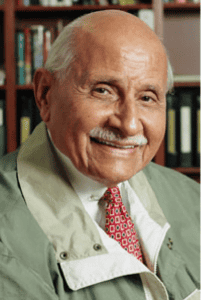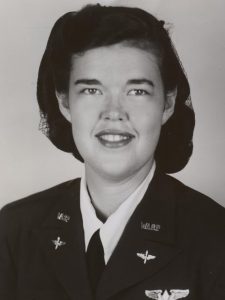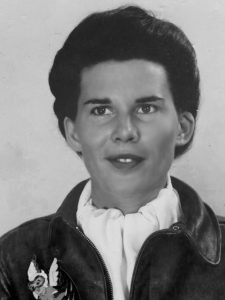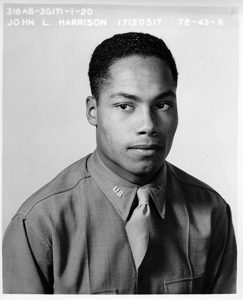 Percy Ellis Sutton
Percy Ellis Sutton
November 24, 1920 – December 26, 2009
Percy Sutton became one of America’s best-known lawyers in the 1950s and ’60s, representing controversial figures such as Malcolm X. He became the highest-ranking African-American elected official in New York City in 1966, when he won election as president of the city’s Manhattan borough, serving until 1977. Sutton was particularly influential as the leader of the Harlem Clubhouse, which dominated 1960s Harlem politics.
Born on November 24, 1920, in San Antonio, Texas, Percy Ellis Sutton was the youngest of 15 children born to Samuel Johnson Sutton and Lillian Sutton. Samuel was an early civil rights activist who farmed, sold real estate and owned a mattress factory, a funeral home and a skating rink—all in addition to being a full-time principal at the all-black Phyllis Wheatley High School. Lillian was also a full-time educator.
The couple raised their family on a farm in Prairie View, Texas. All the children were given chores on the farm, in addition to their studies. Percy was responsible for milking the cows, often accompanying his father on trips to deliver milk to the poor. He also helped his father in his strides toward equality, helping to educate others about racism. His efforts made him the target of policeman and, at the age of 13, he was beaten by members of the local law enforcement for passing out NAACP brochures in an all-white neighborhood. Instead of discouraging him, this incident would later fuel his desire to earn equality for all races.
Thanks to his parents’ emphasis on hard work and education, Percy and all of his siblings went on to earn college degrees. As each of the older siblings established themselves professionally, they would help their younger siblings financially so that they could afford school. Although Percy attended three different prestigious universities—Prairie View Agricultural and Mechanical College, the Tuskegee Institute and the Hampton Institute—he didn’t complete his college degree. Instead, he traveled to New York at the beginning of World War II to enlist in the U.S. Army.
While serving in the armed forces, Percy Sutton became an intelligence officer with the famous all-black Tuskegee Airmen, earning several combat honors. After completing his service time, Sutton was discharged honorably as a captain. After leaving the military, Sutton was determined to finish his education. He enrolled in Columbia University’s law program with the help of the G.I. bill and his previous college grades.
Sutton eventually transferred to Brooklyn Law School in order to support himself financially. In addition to his rigorous class schedule, he was employed at the post office from 4 p.m. until midnight, then worked as a subway conductor until 8:30 a.m. He then attended his law classes at 9:30 a.m. Sutton continued this hectic schedule until graduation. Shortly after law school, Sutton—who mistakenly believed he’d failed the bar exam—enlisted in the Air Force. He later learned he had passed the test required to practice law, but he was already on his way to serve in the Korean War.
After returning to civilian life in 1953, Sutton opened a law practice in Harlem. In keeping with his upbringing, Sutton threw himself into the civil rights movement, representing those who were arrested in protests in the South. It was during this time that he heard civil rights leader Malcolm X preaching equality. Sutton introduced himself, telling the activist that he would be his new lawyer. He represented Malcolm X until the civil rights leader’s assassination in 1965. After Malcolm’s death, Sutton made the leader’s funeral arrangements, and also worked to represent Malcolm’s widow, Betty Shabazz.
In 1966, when Manhattan borough president Constance Baker Motley received a federal judgeship, the City Council chose Sutton as her replacement. He served the remaining three years of her term, and was re-elected to two more terms after that, in 1969 and 1973. In 1971, while still serving as borough president, Sutton began investing in media companies including The New York Amsterdam News, New York’s largest black newspaper. He also invested in AM station, WLIB, making it the first black-owned radio station in New York. In 1974, he and his investors added WBLS-FM to their holdings, as well as more than 18 radio stations and cable franchises.
In 1981, Sutton also made headlines when he and his investment partners bought the crumbling Apollo Theater in Harlem, New York. The theater reopened in 1985, and boasted more than $20 million in renovations, including a cable television studio that was used to produce the variety show It’s Showtime at the Apollo. In 1987, Sutton earned the NAACP’s Spingarn Medal for his work in media.
Sutton retired in 1991, and in 1992 a nonprofit foundation took over the Apollo after Sutton could no longer afford to maintain the building. It continues to run as a concert hall and national landmark. Although he wasn’t officially working in politics anymore, President Bill Clinton tapped Sutton, along with several other politicians, to attend meetings with the Group of Seven Nations in 1995.
Sources:
Biography.com
Findagrave.com
Wikipedia.com





